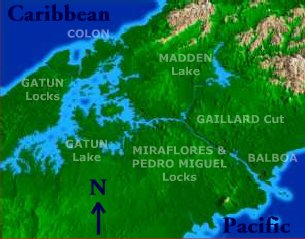
 |
The orientation of the canal through the isthmus of Panama is such that the passage from the Pacific to the Caribbean is in a northwesterly direction, quite contrary to what would be assumed. |
|
In 1534 Charles I of Spain ordered the first survey of a proposed canal route through the Isthmus of Panama. More than 3 centuries passed before the first construction was started. The French labored 20 years, beginning in 1880, but diseases and financial and engineering problems defeated them. In 1903 Panama gained its independence from Colombia. Shortly thereafter, Panama and the United States signed a treaty in which the United States guaranteed Panama's Independence and paid her ten million dollars. On May 4, 1904 the United States purchased the French Canal Company rights and properties for $40 million and began construction. The huge project was completed in 1914 at a cost of approximately $387 million. The Republic of Panama assumed full responsibility for the canal on December 31, 1999. |
DIMENSIONS (Feet)
|
For comparison with the canal, the Sun Princess is 856' long and 106' wide, the maximum width permitted. In theory this leaves 2' of clearance on each side but that assumes perfect alignment and perfect maneuvering!
Other details about the Sun Princess are; 77,000 gross tons, 1,950 passengers plus about 900 crew. Cruising speed is 21 knots. The Sun Princess paid a toll of $174,000 to transit the locks.
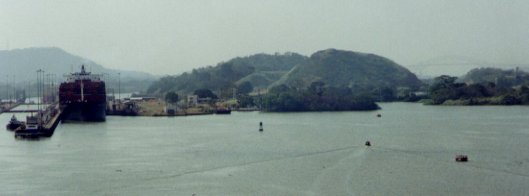 |
The locks are on the left and the Bridge of the Americas (connecting N. & S. America) is faintly visible on the right. |
| Lock operations are controlled from this building. | 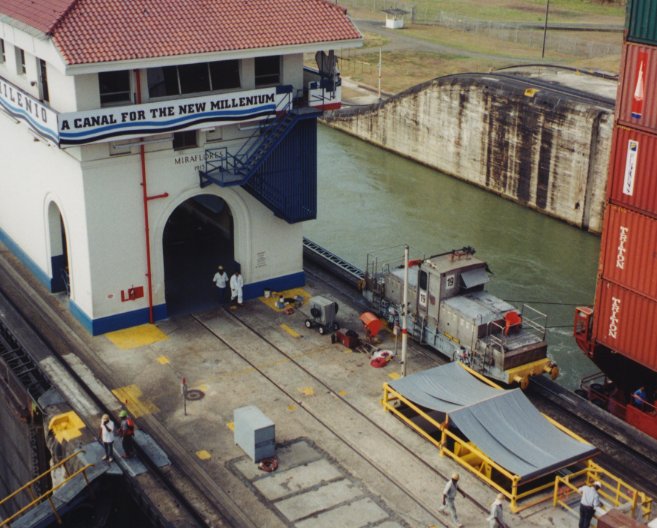 |
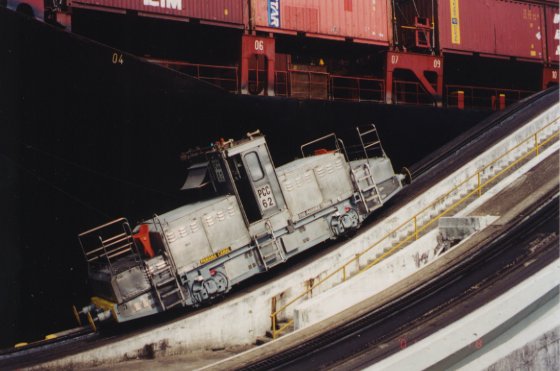 |
These electric "mules" positioned at all 4 corners aid in the movement and positioning assisted by the ships own propulsion. |
| Laden mules work on the two outside tracks. Returning mules can use the center track. There is a cogway in the middle of each track and a gear under the mule to enable it to climb the incline from one lock to the next. | 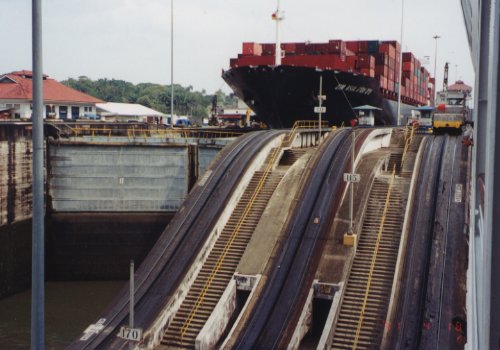 |
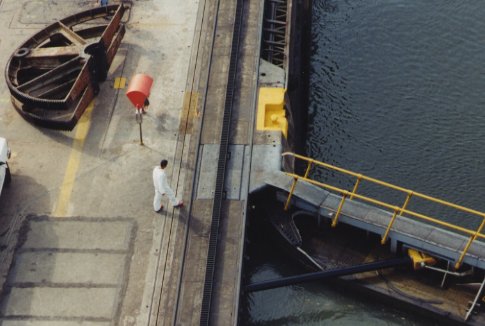 |
This newly installed hydraulic ram (bottom center) has replaced the original sector gears (stacked on left) for moving the gates. |
|
The Sun Princess is on the left of this picture and you can see the vary narrow clearance with the concrete lock. We did scrape a bit and the next day in port, the crew was out inspecting and repainting the side. |
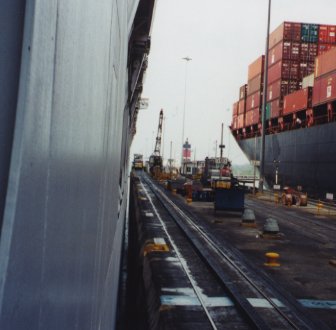 |